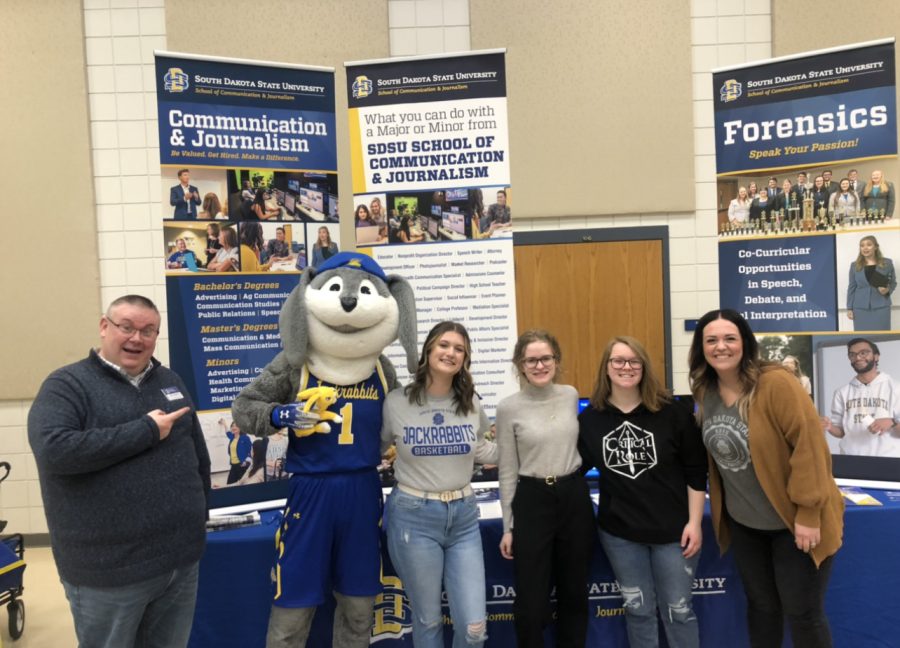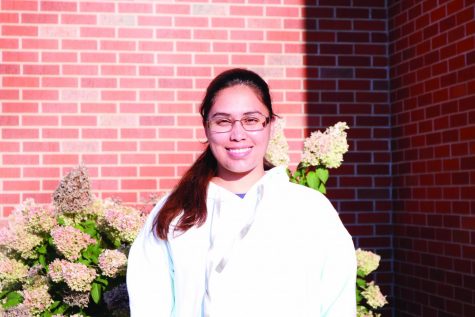Record year for SDSU Junior Day
April 12, 2022
Finals are just around the corner, and so is graduation day for some of our South Dakota State University students. But let’s not forget that the same goes for high schoolers.
SDSU connects with students by using a variety of strategies to support and assist them in their college search process, Shawn Helmbolt, director of admissions, said.
“The Office of Admissions visits nearly 500 high schools annually and connects with students during college fairs, career fairs and other off-campus recruitment events as well,” Helmbolt said.
The Office of Admission hosts about 5,000 students and their families annually through a variety of on-campus recruitment programs and daily visit opportunities, incuding Junior Day.
SDSU Junior Day was created to help high school juniors narrow down their options when they start selecting colleges. This year’s Junior Day was held Feb. 5.
“The program is focused on providing prospective students the opportunity to learn about SDSU, our many high-quality academic programs, opportunities at SDSU outside of the classroom and the value of an SDSU experience, all while spending a typical Saturday on campus that is capped off by the opportunity to attend an SDSU basketball game,” Helmbolt said.
Junior Day this year was very successful, as it was one of the largest groups of attendees. According to Helmbolt, 465 high school juniors and their families attended.
Junior Day is believed to have a strong impact with enrollment at SDSU. With the event happening earlier in the year, students who begin searching for colleges may have a connection or positive experience to SDSU they can look back at.
Some websites, like collegesimply.com, track university enrollment and compare them within a state.
“South Dakota State university tops the list with a population of 11,405 students,” the website reads.
It then shows which schools followed behind SDSU: (2) University of South Dakota with 9,459 students, (3) Black Hills State University with 3,608 students, (4) Northern State University with 3,431 students, (5) Dakota State University with 3,186 students and (6) South Dakota School of Mines and Technology with 2,475 students.
“The past few years, the College of Education and Human Sciences (which includes our Exploratory Studies students at SDSU) has enrolled the largest number of first-time students annually,’’ Helmbolt said. “The College of Arts, Humanities and Social Sciences and the College of Agriculture, Food and Environmental Sciences trail closely behind and enroll a large number of first-time students annually, as well.”
Mary Bowne, a professor in the early childhood education major, said she was not aware of this information. She said that she was excited about the possibilities and opportunities that her college could potentially offer these first-time students.
“As first-time students who have watched our society care for one another during COVID-19, it doesn’t surprise me if these students’ professional goals are to help society in diverse and varied ways,” Bowne said. “Our college offers unique opportunities to students through its varied majors and programs. I’m grateful to know there are so many wishing to pursue degrees in our college, helping society as a primary aspiration.”
Jason McEntee, professor and department head of English and Interdisciplinary Studies, mentioned that the department is delighted to see its enrollment numbers increase and “correct themselves,” as prior to the pandemic, the enrollment numbers declined especially in the humanities.
“Our English and Interdisciplinary Studies major numbers are strong (IDs majors have tripled since last July), and our incoming English majors are double what we had last year,” McEntee said. “For a humanities program at a land-grant institution whose largest programs are based in the sciences (agriculture, nursing, pharmacy, engineering, etc.), this is certainly exciting news. Humanities programs can sometimes get overlooked when they are not an especially large program.”

























